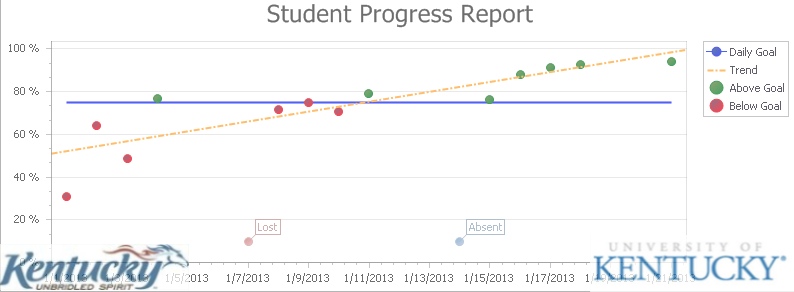Working to make a difference for children
who display challenging behavior
Kentucky Emotional-Behavioral
Disability:
Technical Assistance Manual: Behavioral Characteristics
The EBD Task Force was established by the Kentucky Department
of Education in 1987 to guide Kentucky's educational systems change
efforts for students with or at risk of developing emotional and
behavioral disabilities. The multidisciplinary, multi-agency EBD
Task Force worked for five years to create a practical, objective
definition of the student population and procedural guidelines to
assist school districts in the screening and identification of students
for services under the EBD label.
Characteristic I
"Severe deficits in social competence which impair interpersonal relationships with adults or peers".
Students identified as EBD using this criterion demonstrate severe types of inappropriate social behaviors and/or deficits in social skills.
These behaviors and/or deficits may or may not clearly interfere with academic progress. However, they do clearly interfere with the student's social/emotional development and impair to a significant degree the development and maintenance of satisfactory interpersonal relationships with peers and adults. This characteristic enables students to be identified as EBD who may be making acceptable academic progress, but who continue to demonstrate severe deficits in social competence to the extent that interpersonal relationships cannot be developed or maintained.
Key Questions
In determining the student's social competence the following questions should be addressed:
|
Characteristic II
"Severe deficits in academic performance which are not commensurate with the student's ability levels and are not solely the result of intellectual, sensory, or other health factors, but are related to the students social-emotional problems".
To be identified as EBD under this characteristic the emotional-behavioral condition must directly and specifically interfere with the student's academic progress. There are two areas of concern:
1) The emotional-behavioral condition must clearly interfere with the student's ability to profit from instruction. Students who are making adequate academic progress as evidenced by achievement tests, report cards, daily work samples, curriculum-based assessment measures, and so on, should not be identified as EBD under this characteristic.
2) Students whose emotional-behavioral problems might be explained by intellectual, sensory, or health problems should not be identified as EBD unless specific interventions have been implemented with respect to those problems, and the emotional-behavioral condition continues to exist. (Specific interventions refers to the implementation of procedures which previously have proven effective for students with similar problems).
Key Questions
In determining the existence of a severe academic deficit, the following questions should be addressed:
|
